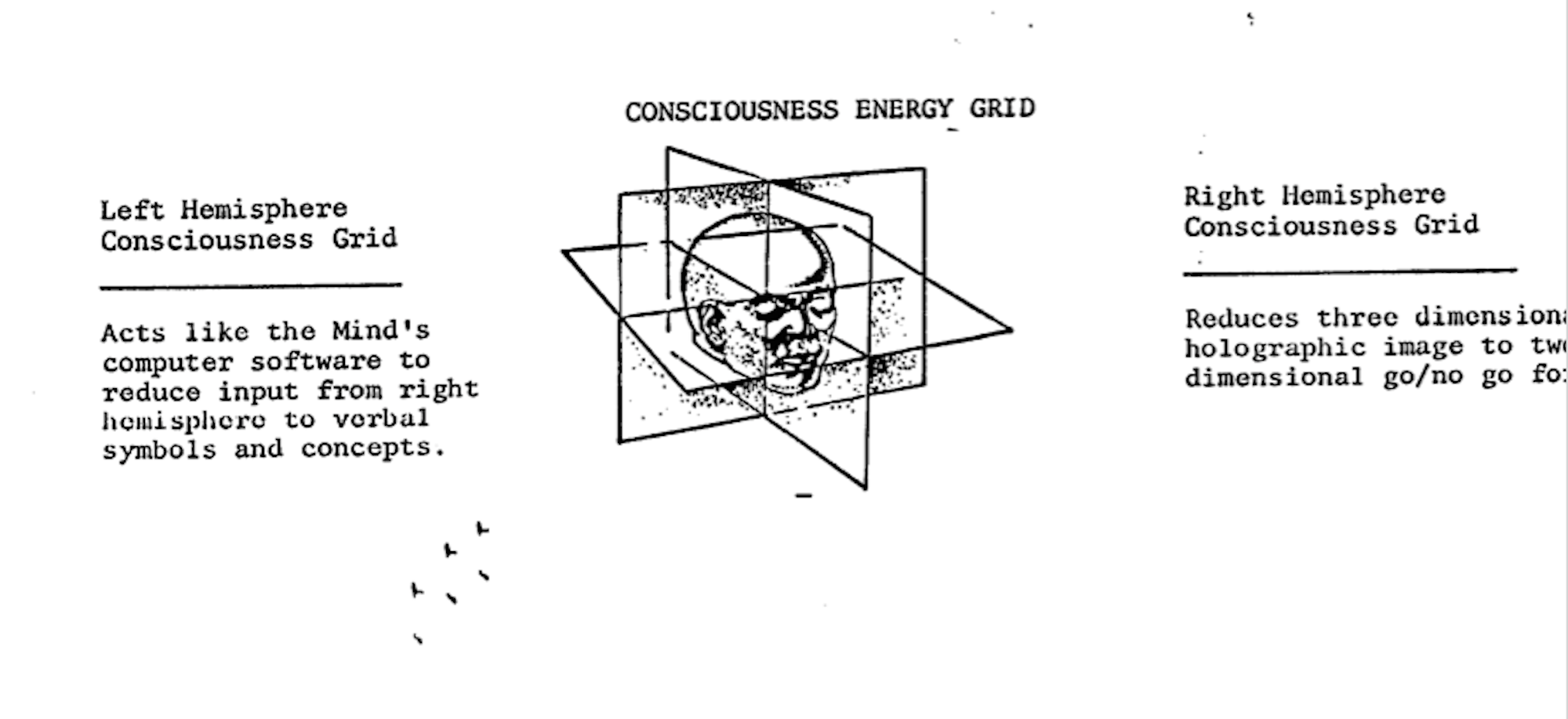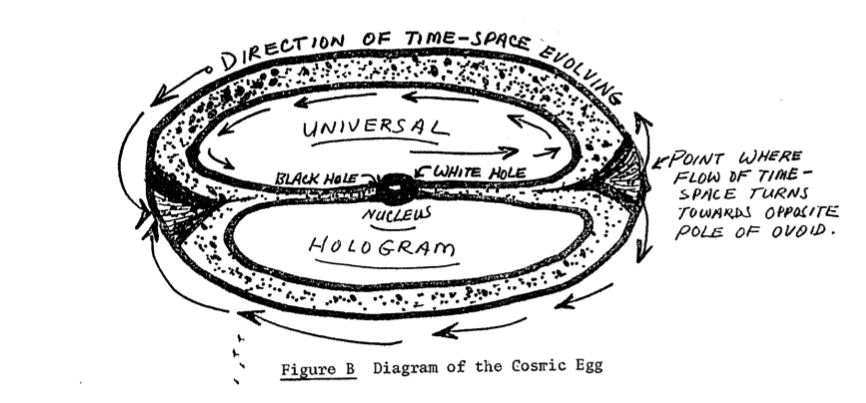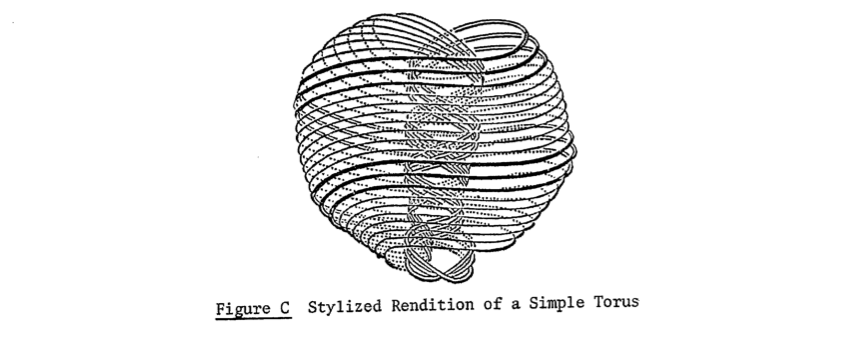McDonnell's assessment, collected from his experience at the secluded institute, formed the basis of a 29-page Army document that featured detailed explanations of hypnosis, holograms, and out-of-body experiences. The document placed these phenomena in the context of larger ideas of consciousness, energy, space-time, quantum subatomic particles, and so-called astral projection, a practice that aims to transport consciousness around a metaphysical plane—a central idea in McDonnell's assessment.
McDonnell cited a metaphor penned by Monroe Institute employee Melissa Jager in order to illustrate the nature of hypnosis. The metaphor says that a normal state of consciousness is like a lamp, which emits light in a "chaotic, incoherent way." However, a hypnotized state of consciousness is said to be like a laser beam, whose thoughts and energy are focused like a "disciplined stream" of light.

The explanations in the 29-page document also feature hand-drawn visual aids illustrating the more complex topics. Image: CIA

Image: CIA

Image: CIA
"Intuitional insights of not only personal but of a practical and professional nature would seem to be within bounds of reasonable expectations," McDonnell wrote, in reference to parapsychology.
In other words, Commander McDonnell concluded, hypnosis and astral projection are worth the Army's while.
Officers accepted into Project Center Lane underwent hypnosis and practiced reaching the so-called "astral plane," with the goal of learning foreign languages and undergoing what the documents only refer to as "habit control training."
According to one of the declassified Army files, 251 Army intelligence candidates were selected for the first year of experimentation. Of those candidates, 117 were interviewed under the impression that they were taking a survey. The document gives no specifics about the survey itself, but does indicates that the interviewer asked fairly direct questions about "psychoenergetics."
"Individuals who had objections to the military use of psychoenergetics were not considered for the final selection," the document reads. "Additionally, individuals who displayed an unreasonable enthusiasm for psychoenergetics, occult fanatics and mystical zealots were not considered for final selection."
Between 30 and 35 of the original 251 candidates were said to have "desired" traits, such as open-mindedness and intelligence, that made them suited for the program.
Intelligence officers who were accepted to the program were sent to the Monroe Institute. Officers would then listen to the "Hemi-Sync" audio. After this, one of the institute's research associates would guide intelligence officers into the astral plane, a psychic space in which the institute said that the officers supposedly could heighten their sensory experiences, heal their bodies, travel into the past or future, or even solve real-world dilemmas without the restraints of a physical body.
Another technique known as "remote viewing" was also employed upon government employees of an unknown agency, according to a declassified document from 1982. The document doesn't specifically mention the Army or the Monroe Institute, but it precisely follows the description of remote viewing which was explained in detail in a 1983 document that explicitly mentions the facility.




No comments:
Post a Comment